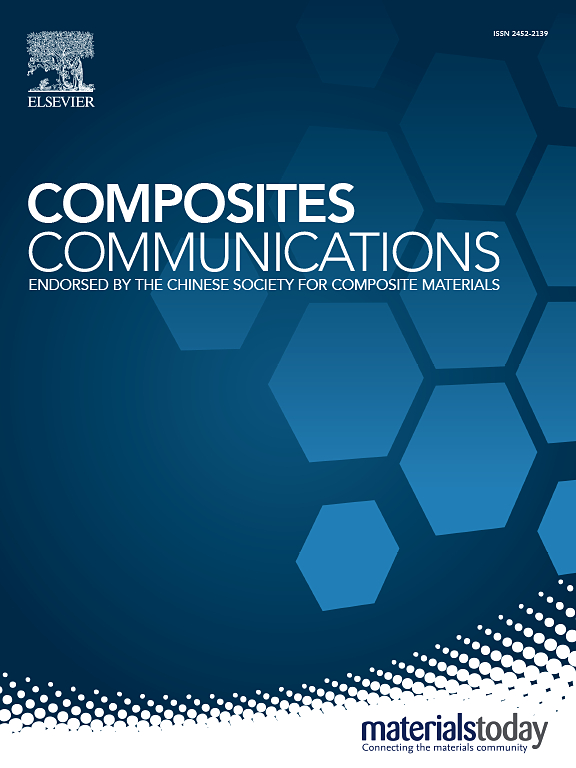Rational design of glass fiber reinforced epoxy resin with thermal conductivity but electrical insulation through a multi-level network
IF 6.5
2区 材料科学
Q1 MATERIALS SCIENCE, COMPOSITES
引用次数: 0
Abstract
The issue of heat accumulation brought about by the high level of integration of high-power electronic structures or devices has emerged as a significant threat to the safe and reliable operation of the devices. Unfortunately, the inherently low thermal conductivity of conventional glass fiber reinforced epoxy polymers (GFRP), which are the main materials for supporting and connecting the substrates of electronic devices, can no longer fulfill the demand for efficient heat dissipation in devices. Here, we propose a one-dimensional/two-dimensional (1D/2D) “line-plane” bridging structure building strategy of the fillers to successfully prepare modified GFRP with both excellent thermal conductivity and electrical insulation properties. Through the “line-plane” structural effect between sintered carbon nanotubes-borocarbonitride coaxial tubes (CNTs@BCN) pretreated with dopamine and boron nitride (BN) assembled on glass fiber cloth by van der Waals forces, long-range ordered phonon transport paths are constructed while electron transport is effectively suppressed. GFRP with bridging structure has obtained an astonishing thermal conductivity of 1.69 W/mK, which is 445.2 % higher than that of pure GFRP, while maintaining excellent electrical insulation performance (breakdown strength of 38.2 kV/mm). In addition, the mechanical properties of the composites are also satisfactory. This research broadens the approach to the design of high thermal conductivity electrical insulation glass fiber reinforced epoxy composites and provides a promising avenue for the development of high-performance electronic packaging materials.
求助全文
约1分钟内获得全文
求助全文
来源期刊

Composites Communications
Materials Science-Ceramics and Composites
CiteScore
12.10
自引率
10.00%
发文量
340
审稿时长
36 days
期刊介绍:
Composites Communications (Compos. Commun.) is a peer-reviewed journal publishing short communications and letters on the latest advances in composites science and technology. With a rapid review and publication process, its goal is to disseminate new knowledge promptly within the composites community. The journal welcomes manuscripts presenting creative concepts and new findings in design, state-of-the-art approaches in processing, synthesis, characterization, and mechanics modeling. In addition to traditional fiber-/particulate-reinforced engineering composites, it encourages submissions on composites with exceptional physical, mechanical, and fracture properties, as well as those with unique functions and significant application potential. This includes biomimetic and bio-inspired composites for biomedical applications, functional nano-composites for thermal management and energy applications, and composites designed for extreme service environments.
 求助内容:
求助内容: 应助结果提醒方式:
应助结果提醒方式:


